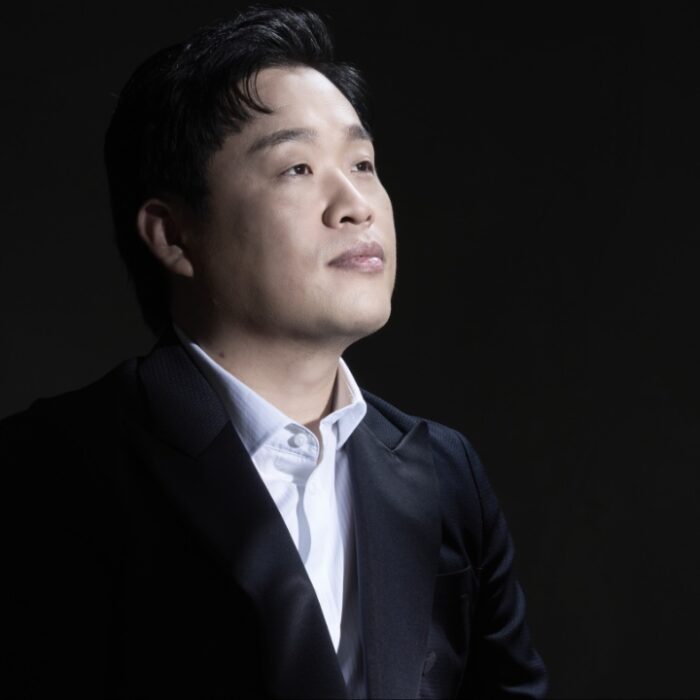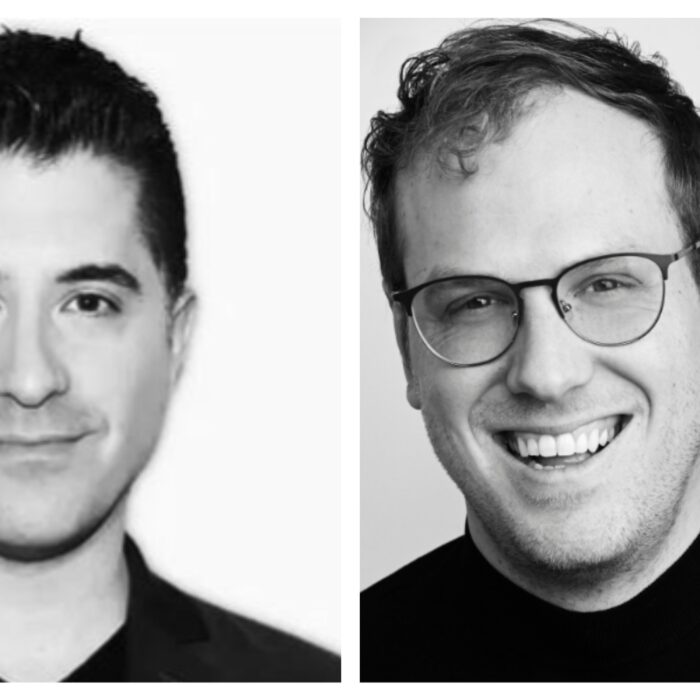
Q & A: Greg Kallor on Creating the ‘Frankenstein’ Opera
By Francisco SalazarThis past week, the Arizona Opera presented the world premiere of Greg Kallor’s second opera “Frankenstein.”
Kallor is a composer and pianist whose first opera “The Tell-Tale Heart” will be performed at the Chamber Music Society of Lincoln Center. He has also collaborated Dover and Escher String Quartets and Tuesday Musical and has also performed in recital at Carnegie Hall. His works have been featured on Music Videos and on recordings.
OperaWire had the chance to speak with the composer regarding his second opera and rediscovering “Frankenstein.”
OperaWire: Tell me about your decision to adapt Mary Shelley’s classic work. Were you a fan of the book as a young adult?
Greg Kallor: My decision to adapt Frankenstein is symbolic of the entire process of creating this opera: it was a collaboration. Sarah Meyers, the brilliant director, is the reason that I began my Frankenstein journey; we were brainstorming about our next collaboration, and she suggested that I read Mary Shelley’s heartbreaking novel. I couldn’t put it down. It felt both epic and intensely intimate; it felt operatic. I thought I knew the story, but most adaptations I’ve seen stray very far from the novel — so I wasn’t prepared for how deeply it resonated. I had found a story I wanted to tell, and I knew exactly how I wanted to tell it.
OW: What are some of your inspirations for this opera?
GK: Right around the time I presented my first musical sketches for the opera in the catacombs of Green-Wood Cemetery in Brooklyn, NY, The New Yorker magazine published an essay about Frankenstein by Jill Lepore that blew my mind. I’d probably read the novel a dozen times by that point, but I realized that I had only scratched the surface. In order to translate Frankenstein into an opera that truly honors Mary Shelley’s intent, I needed a deeper understanding of the layers of meaning embedded in the novel, and of the life of the woman who wrote it.
My wife gave me a gift of the Annotated Frankenstein, co-edited by Susan Wolfson and Ronald Levao — a gorgeous edition with brilliant footnotes that give illuminating historical context and insightful literary analysis. And the visual art pairings add layers of dimension to the story. Susan Wolfson, who teaches at Princeton University, invited me to several of her Frankenstein seminars — which have been thrilling, and incredibly inspiring as I crafted the music. Charlotte Gordon’s fascinating dual biography of Mary Shelley and her mother, Romantic Outlaws, gave me great insight into the heartbreaking circumstances within which they produced their phenomenally resonant works. These books helped me inhabit the world of Frankenstein and deeply influenced the way I’ve tried to bring the characters to life in the music.
OW: Tell me about the vocal writing and what can audiences expect.
GK: For me, there has to be a reason that someone feels compelled to sing something — as if there were no other possible way to convey the thought. That’s my starting place for setting words to music: finding the impetus to express the idea through music.
I lived with Mary Shelley’s text for a long time and allowed them to suggest musical ideas, which I then refined over time as I worked with the singers, the conductor, the dramaturg, and the director.
An aria provides an opportunity to stop time and open a window to a character’s soul, allowing us to feel what they feel. As both the librettist and composer, I had to choose which thoughts to highlight as the most important; the most poignant. For me, arias are emotional anchors for the opera as a whole, so I wrote one for each of the main characters: the Creature, Victor Frankenstein, and Elizabeth Lavenza (Victor’s fiancée). Baritone Ed Parks (the Creature), tenor Terrence Chin-Loy (Victor Frankenstein), and mezzo-soprano Katie Beck (Elizabeth Lavenza) bring exquisite subtlety, nuance, and depth to this music. They’re going to break people’s hearts!
OW: Tell me about the music and what you want to tell with this opera.
GK: My goal is for the audience to be completely connected to the world of Frankenstein from the opening gesture to the final silence. I want to lift Mary Shelley’s gorgeous work off the page with music that makes us feel for the Creature and all the characters in this tragic story.
I began my exploration of Frankenstein by focusing on what I believe is the heart of the novel: the pivotal scene in which the Creature describes the misery of his solitary existence to Victor Frankenstein — the man who created, and abandoned him. In this scene, Victor begins to glimpse the world from the Creature’s perspective; he realizes that the being he created was a victim long before he was a murderer. Dreadful understanding of his own complicity in the Creature’s suffering grows unnervingly. More shocking than any classic trope of gothic horror stories, that shift in perspective forces a powerful moment of reckoning: what truly makes someone a “monster”?
What drives my creation of this opera about a living, feeling being that is shunned and vilified for its “otherness” is Mary Shelley’s exquisitely wrought plea to look deeper within ourselves to find our commonality, and to uphold our responsibility to one another. The Creature’s tragic existence is a stark reminder of the urgent need for empathy. I believe that telling this story, at this time, and in this way, is vital.
OW: What is it like to work with the Arizona Opera?
GK: Arizona Opera’s fabulous music director, Kathy Kozak, has been a dream collaborator, gracefully and expertly attending to so many facets of the musical preparation that are essential to the success of the production.
The wonderful marketing and education team has been incredibly supportive, and super passionate about inviting the Phoenix and Tucson communities to fantastic events during which we explore Mary Shelley’s novel together and get excited about the premiere. And they’ve been very successful — all three Phoenix performances are nearly sold out!
Arizona Opera honored me with this commission, and they’ve been very encouraging — even as they’ve been navigating the immense challenges of maintaining an entire opera company during a pandemic. When I invited their feedback during the first workshop, the president, Joe Specter, said: “You know this music better than anyone; you know what you need to do, and you have the support of some of the most thoughtful people in the opera world. My job is to get the best possible people on this project, put them in a room together, and stay out of the way.” I’m incredibly grateful for that enormous vote of confidence in me, my team, my music, and my process, and for the trust in what we will produce. I don’t plan to let him — or any of my collaborators — down.
OW: This is your second opera. How is this experience different from the first one?
GK: My first dramatic musical work, “The Tell-Tale Heart,” is a 25-minute chamber opera for 1 singer, 1 cellist, and 1 pianist. I wanted to compose a musical ghost story that would make audiences feel as if they’re sitting around a crackling campfire, deep in the woods, so I created it on a very small scale to allow for a sense of intimacy. (We premiered it in a 100 year-old crypt in Harlem!) Frankenstein is a two-act opera for 8 singers and a 21-piece orchestra, and it runs a little over 2 hours; the difference between “The Tell-Tale Heart” and “Frankenstein” is one of scale. It’s been exhilarating — and humbling — to see so many passionate people uniting to create a singular, deeply moving experience of this Frankenstein story. I hope that the audience experience of both pieces is similar in terms of the sense of intimacy and depth we create in the music and in the staging.
OW: What brings you to these haunted stories?
GK: It’s funny — I was never really drawn to haunted stories until I became a storyteller! But it’s not the classic horror-story tropes that interest me; it’s how a well-told story invites us to enter its world and connect with the characters; how it evokes an emotional response, and inspires us to find resonance in our own lives.
Frankenstein is a horror story, but not in the way people often think of it. The real horror is the agony of a living being who is callously abandoned by the man who created him. This creature endures terrible suffering. People are afraid of him because he looks different. He’s reduced to this difference; he’s perceived as “other,” and he’s reviled for it. His desire for companionship is repeatedly and violently rejected; and he’s driven to respond in kind, killing the people his creator loved most. The real horror of Frankenstein is a lack of empathy. And, sadly, this 200-year-old horror story continues to be relevant.
Frankenstein resonates so deeply because it holds up a mirror and asks us to consider our own humanity. Who’s the monster: a creature who is “other” — or the person who can’t see past this difference, and acts hatefully? People of all communities and backgrounds can identify in some way with the Creature because we are all “other” to someone.
OW: Tell me about your collaboration with Sarah Ina Meyers.
GK: Working with Sarah has been one of the most rewarding collaborations I’ve ever had. She is unparalleled in her dedication, ingenuity, thoughtfulness, and sensitivity — both to the work and to her colleagues. And she is a brilliant artist. I revel in every aspect of the process of working with her, and I am so grateful to have found a creative partner in whom I have complete trust — artistically, professionally, and personally. Sarah and I started this Frankenstein project together almost six years ago, and we have collaborated on it through every phase of its development — which makes it incredibly special that she’ll direct the world premiere at Arizona Opera.
OW: What is next after Frankenstein?
GK: I’m honored and incredibly excited that my musical ghost story, “The Tell-Tale Heart,” will be performed at the Chamber Music Society of Lincoln Center in New York City one week after the final performance of Frankenstein — on Halloween!
Then I’ll start preparing for an upcoming solo concert I’m giving —after taking a day or two, or twelve, to process these extraordinary October events and savor them! It’s such a privilege that people want to perform my music.
Thinking about my next projects, I’d love to write a piano concerto! I’ve had so much fun orchestrating Frankenstein, and after years of focusing on the opera, I’m excited to get back to performing — to be able to combine these two passions in a concerto would be a wonderful next project for me.
I’m very eager to record a bunch of solo piano pieces and chamber music that I’ve composed over the past 10 years. I’ve been itching to write a string quartet, and it’d be fun to write something for clarinet. I’ve got a few ideas buzzing in my head for my next opera, if I’m fortunate enough to receive another commission. Different stories than those I’ve told so far. But I’m far from being finished with Frankenstein. I hope that other opera companies will be excited to bring Frankenstein to their communities and share this musical experience of a story that has resonated with people for over 200 years. As Mary Shelley wrote in the introduction to the 1831 edition of the novel, “I bid my hideous progeny go forth and prosper.”


